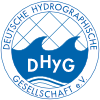RoboVaaS
Praxisorientierte Entwicklung von robotischen Systemen mit As-a-Service-Ansatz für den Hafen der Zukunft
Digitalisierung und Vernetzung von Hafeninfrastruktur ist ein voranschreitender Trend, der eng verzahnt ist mit dem Einsatz von Autonomous Surface Vehicles (ASV). Zur Betrachtung des As-a-Service-Konzeptes unter Anwendung von maritimen Robotern im Hafenumfeld wurden im Rahmen des RoboVaaS-Projektes fünf Services entwickelt, implementiert, getestet und demonstriert. Die Services sind: Echtzeit-Strandungsvermeidungsdienst, Schiffsrumpfinspektion, Kaimauerinspektion, Hydrographische Tiefenmessungen, Data Muling – eine asynchrone akustische Mittelstrecken-Kommunikationstechnologie. Um die gesamte Servicearchitektur abzubilden, wurde eine Software-Infrastruktur geschaffen, die die gesamte Service-Pipeline von der Erstellung eines Auftrages über die Durchführung bis hin zum Sichten der Ergebnisse abbildet. Im Mittelpunkt der Hardware-Entwicklungen stehen ASV und Remotely Operated Vehicles (ROV), mit denen die Services hardwareseitig implementiert und demonstriert wurden. Das Projekt wurde live auf dem ITS World Congress in Hamburg 2021 vorgestellt. Folgeprojekte nutzen die Entwicklungsarbeiten und bauen auf der Servicearchitektur der Software und dem ASV SeaML:SeaLion auf und binden zusätzlich Flugdrohnen ein, um automatisierte Müllbeseitigung aus dem Meer und Inspektion von Hafeninfrastruktur zu entwickeln.
ASV | ROV | WebUI | Schiffsrumpfinspektion | Kaimauerinspektion | Tiefenvermessung | RoboVaaS
Digitalisation and networking of port infrastructure is an advancing trend that is closely intertwined with the use of autonomous surface vehicles (ASV). To examine the as-a-service concept using maritime robots in the port environment, five services were developed, implemented, tested and demonstrated as part of the RoboVaaS project. The services are: real-time beaching avoidance service, hull inspection, quay wall inspection, hydrographic depth survey, data muling – an asynchronous acoustic medium range communication technology. In order to map the entire service architecture, a software infrastructure was created that maps the entire service pipeline from the creation of an order to its execution and the viewing of the results. The hardware developments focus on ASVs and remotely operated vehicles (ROV), which were used to implement and demonstrate the services on the hardware side. The project was presented live at the ITS World Congress in Hamburg 2021. Follow-up projects will use the development work and build on the service architecture of the software and the ASV SeaML:SeaLion and additionally integrate aerial drones to develop automated waste removal from the sea and inspection of port infrastructure.
ASV | ROV | WebUI | hull inspection | quay wall inspection | depth sounding | RoboVaaS


